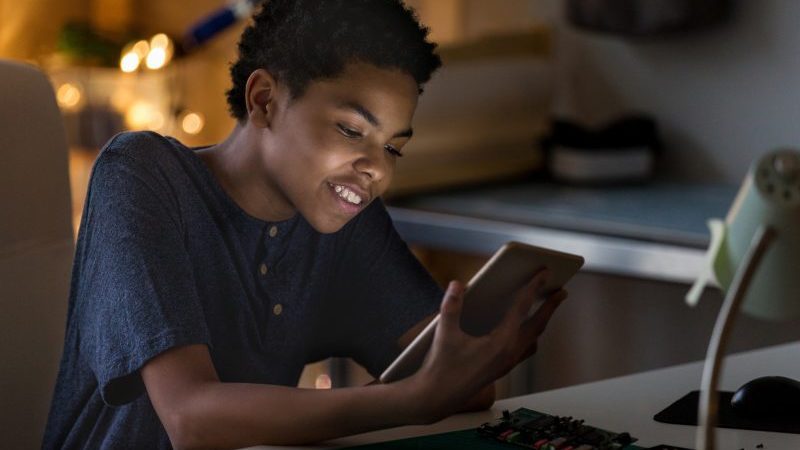Our kids grow as readers when they are excited about books and have many different ways to practice reading. We create reading routines in our classrooms and schools by setting up cozy reading nooks in classroom libraries and celebrating Read Across America Day with a school-wide reading challenge. We play games like sight word bingo, create word walls, and use reading strategies like stop and jots to help our kids become stronger readers. It’s hard to get into these routines when our school schedules are in flux. Even if your school started online, in person, or a mix of both, that all might change depending on COVID-19 cases in your area.
There are a lot of ways to help your kids get excited about reading, build their confidence, and create reading routines , whether you are together or apart. Here are some tips for building motivation and creating a rich reading culture in a hybrid or distance learning environment.
1. Read together, even while apart
When we read to and with our kids, we can model our excitement and show them what we’re thinking. When we say things like, “I think that Pete the Cat is going to feel better once he sees his friends,” we are modeling making a prediction. We can stop and ask questions like, “Why do you think Pete feels sad?” Our kids can see how we use reading speed, tone of voice, and pauses as we read to them. If a grownup isn’t able to read directly to kids, audiobooks are a great way for students to hear the story and follow highlighted text as they read (check out Learning Ally’s Audiobook solution, which has a library of popular audiobooks kids can choose from).
Teachers and principals can make a video of themselves reading and share it on Facebook or send to kids. We love how this third-grade teacher created a YouTube channel with video read alouds for her kids.
2. Help students talk to each other about their reading online
One of the best parts of reading is talking about the story with someone else. In our classrooms, we use Literature Circles, Book Talks, and Reader’s Workshop to create discussion routines for reading. Even when students aren’t learning in the classroom, we can still give them ways to read together and discuss.
If you are in a hybrid model, create Hybrid Book Buddies. Kids can write a note to their buddy about what they read, share book recommendations, and describe their favorite characters. The kids leave a letter for their Book Buddy when they move to learning at home. Kids love having a letter to open when they get to school.
If kids are learning online, you can put them in breakout rooms and have them buddy read to each other. Ask them to grab a piece of paper or a sticky note so they can jot down questions, their favorite sentence, and any ah-ha moments they have.
Students can make videos of themselves sharing their book reviews. Ask them to give the book a glow (what they loved about it) and a grow (what would make it better). What questions do they have for the author? Who was their favorite character and why? You can watch the videos together or share them with your kids.
3. Create school-wide virtual reading routines
It’s fun for kids to hear about what the adults in their lives are reading. Teachers can suggest that adults read with their kids. It’s fun to take turns (you read a page, then I read a page). Librarians host a Fireside Zoom Chat where they share book recommendations, what they are reading, and what they hope to read next. Older students can make videos of themselves reading to younger kids. Sharing reading choice boards, reading scavenger hunts, and other activities is a great low-stakes way to encourage kids to make reading part of their every day.
Check out online tools where kids blog about reading or create videos where they read to each other.
4. Set up a virtual book club for students
A sense of belonging supports a student’s social and emotional health, and book clubs provide lots of connections. Book clubs should be tailored to meet your students where they are in their reading journey. Some struggling students will need smaller groups; some might be able to lead themselves. All of them need an agenda or plan to follow. Just like in your in-classroom small groups, you’ll want to have one teaching point per meeting.
Create a digital slideshow with different books students in book clubs can choose from. It’s more fun when kids get to decide what they want to read.
5. Make audiobooks available for your kids at school and at home
When we are all at school together, our kids can visit the library and read books in their classroom. When kids are at home, they don’t always have the books they want or need to read. Audiobooks are a great way to make books readily available for our kids from their computers. We really love Learning Ally’s Audiobook Solution because it gives teachers data about kids’ reading and there are progress monitoring tools, which helps teachers have a better sense of how much kids are reading. Audiobooks are a great way to give kids equal access to reading. Want to learn more? Get your free guide from our friends at Learning Ally below.


